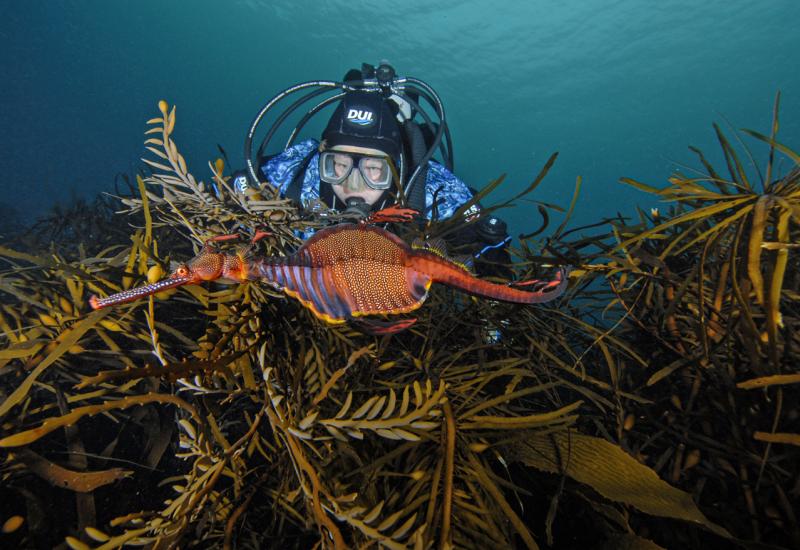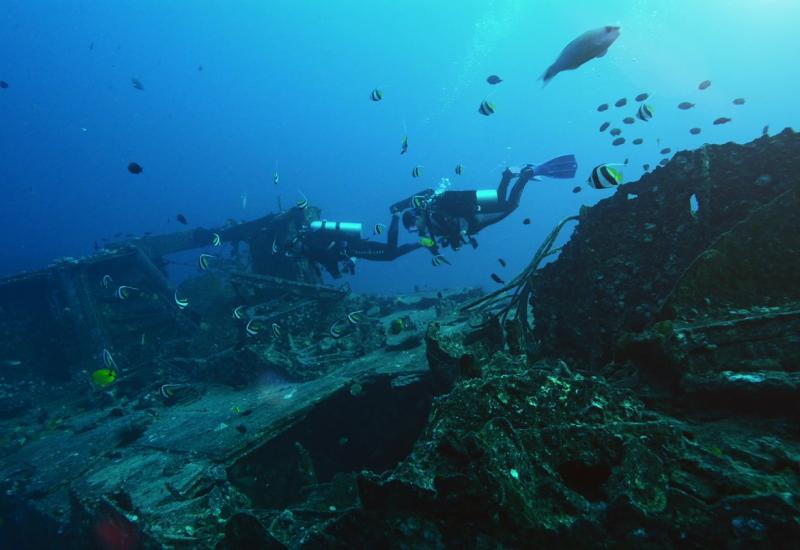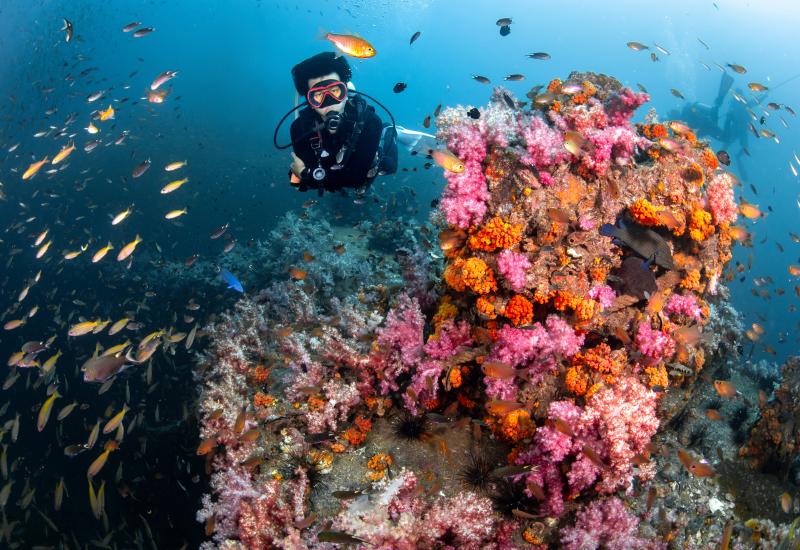Seven Historically Significant Wrecks to Dive in the United Kingdom

Shutterstock.com/Peter Hermes FurianMap of the United Kingdom
U.K. waters are not the clearest waters in the world, but that’s exactly why they contain some of the world's most dramatic shipwrecks. The turbulent coastal waters have sent scores ships to their watery graves, turning the underwater coastline is a veritable museum of rusting remains and looming skeletons. Today estimates suggest that around 40,000 ships rest beneath the surface of the UK’s territorial waters.
Each wreck offers a unique glimpse into Britain's history. In recent years, there bas been huge increase in the number of divers taking to Britain's waters, and with it a boom in diving companies offering wreck diver courses. British waters can be dived all year round, although May through August are the warmest—and therefore most popular—months with the best visibility. The often-treacherous spring tides are best avoided.
1. The SS Mohegan
Mohegan lies in the Manacles Reef, a graveyard of, it is said, over a thousand ships off the Lizard in Cornwall. Over 100 lives were lost when she sank quickly on the 14th October 1898. Exactly how she came to such an end is something of a mystery, although recent research suggests that a storm accentuated the magnetic pull of the rocks in the area, misleading the crew’s compass so they believed they were further out to sea than they were in reality. The wreck lies about 65 feet beneath the surface. Divers can still see its four boilers, as well as parts of the engine, bow and cargo hatches. During the summer months the area is ideal for spotting basking sharks, orcas and dolphins.
2. The SS Sphene

Shutterstock.com/Becky GillFIsh swim over the wreck of the SS Sphene.
This is one of Britain's more recent wrecks and is considered one of the most picturesque. She was a 187-foot-long coal transport that ran aground on the Mouls off Cornwall in 1946 during bad weather. Today the Sphene lies between 75 to 82 feet below the surface, her still-standing bow and stern offering shelter to a wide range of wildlife: Sea fans cling to the sides and everything from lobsters to pollock can be found swimming in the area. The midship area has collapsed, and the boiler and engine are exposed—as are the in-place propeller and rudder. As of 2022, the bow section is not considered safe to enter as the structure is beginning to collapse.
3. James Eagan Layne
On the night of the 21st March, 1945, the Liberty ship James Eagan Layne, part of a convoy BTC-103 bringing munitions into Britain, was sighted 12 miles off Plymouth by Commander Heinz Buhse of the U Boat U.399. Buhse fired a torpedo, which struck the ship between her number 4 and 5 holds. She quickly began to take on water, leading her crew to abandon ship 15 minutes later. Today she lies in Whitsand Bay near Plymouth at a depth of between 65 to 78 feet, making her one of the shallowest dives on this list. Her 320-plus-foot hull is largely intact; although her guns and cargo were salvaged there is still much to be seen including the keel, decks and stern deckhouse. Visibility at the site is limited, ranging from just 3 to 26 feet at best. The wreck is also very dark so a flashlight is recommended, and unless very experienced avoid diving it during the high and fast spring tide.
4. La Girona

Public DomainAn artistic depiction of La Girona.
The wreck of La Girona lies just off the coast of Northern Ireland near to Giants causeway. She was a mighty Spanish galleon and set to sea in 1588 as part of the Spanish Armada trying to drive Elizabeth I from her throne. This is among the most historically significant in Britain waters, and diving requires a license to dive the wreck since it previously suffered frequent damage from divers searching for the gold and treasures she was carrying when she went down. It is one of only two wrecks in Northern Ireland protected by this level of legislation. La Girona sank with 1300 people onboard of whom only nine are said to have survived, making it a tomb. Many companies offer opportunities to dive the wreck but, as Tom Cass of Aquaholics dive centre in Portstewart says, these are conducted strictly on a “look but don't touch basis.” Little remains of the ship herself today, but that does not detract from the thrill of diving the site and seeing where such a proud ship met her end.
5. The Lucy
This wreck is probably the most spectacular on this list. She sank in 1967 off the coast of Pembrokeshire. On the 14th February, the Dutch ship struck the infamous Blackstones Reef. Today she lies upright and intact at a depth of 104 to 131 metres within the Skomer Marine Reserve. Exposed on the port side, the area is prone to strong currents and has little to no light making it best suited to experienced divers. For those who do dive the rewards are amazing—it is possible to swim through passages and enter rooms. Lucy is quite heavily silted in places and is full of marine life such as dead man's fingers, crabs, Plumose and divers are regularly visited by friendly seals.
6. The Abyssinia
Abyssinia, a German ship, hit the Knivestone Rocks in the treacherous waters off the Farne Islands and sank in 1921. She lies at the relatively shallow depth of 60 feet and with her boilers standing proudly on the seabed. The wreck lies scattered over quite a large area and generally gets more interesting the deeper you go. Visibility on a good day can be as much as 65 feet and the steel plates are often swarming with sheltering cod and pollock. The Abyssinia is the largest wreck in the area and as such is popular with divers. Many tours operate along the coast and a dive to the Abyssinia is often combined with those to others in the area which include the wreck of the St Andrea and the bombed Somali.
7. HMS M2

Public domainThe HMS M2 sits on the surface with her sea plane.
A submarine that was sunk in 1932 off the coast of Dorset, she lies in tact upon the seabed at a depth of 140 meters. HMS M2 was a submarine aircraft carrier who left port in January to take part in a training exercise. The last sighting of her was at 11:15 A.M. when the captain of a passing merchant ship reported seeing her dive. What happened next is not entirely clear, but her hangar door when she was found days later, meaning that she would have flooded very quickly. All 60 of her crew died in the accident. As such, HMS M2 is a designated war grave. An attempt to salvage her was made soon after her loss but this was soon abandoned.
Given her designation, any diver to the site must operate under a strict look don’t touch policy—so fortunately there is plenty to see. The interior can be glimpsed through the still open hangar door, while crabs and numerous species of fish are frequent occupants. The site is suitable for less experienced divers but should only be dived at slack water as the currents can be extremely strong in the area. There are many companies that offer tours of the wreck operating out of Lympne Bay.










